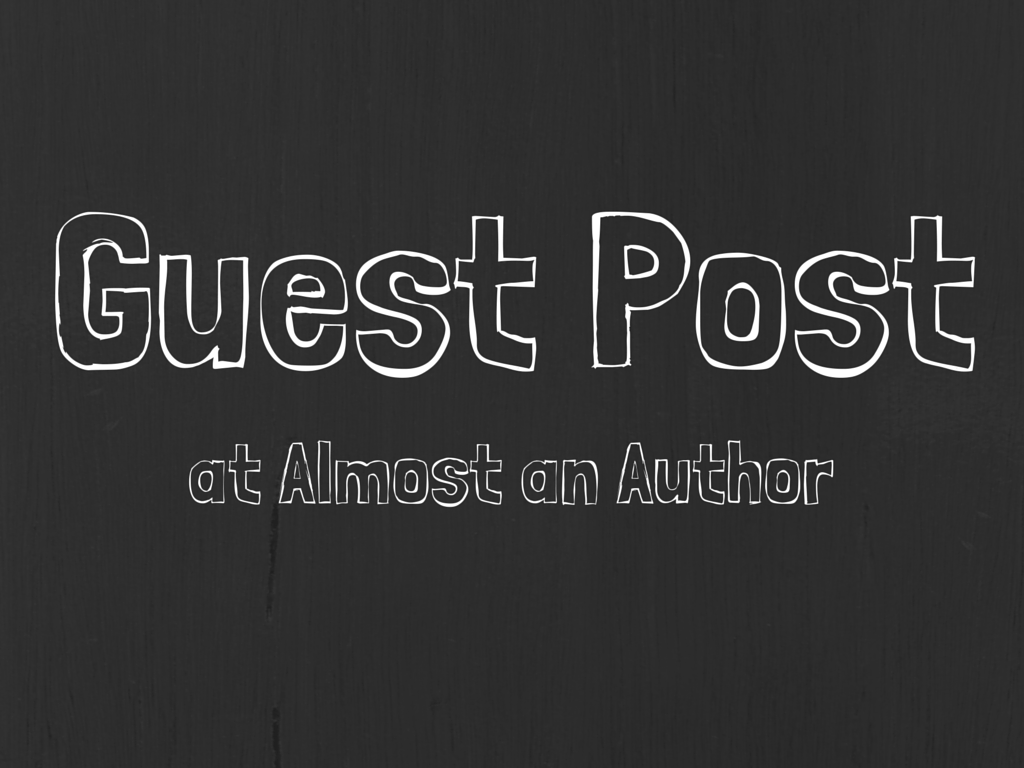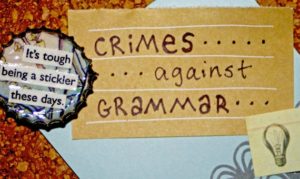Of the mechanical misdeeds common to writing, the comma splice may be the most insidious. This sneaky little fugitive hides out in the writing of students and professionals alike, smashing up sentences and taking liberties with punctuation.
The grammatical equivalent of a hit-and-run, this nefarious collision of clauses happens when one sentence crashes right into another one, leaves its mark (a comma) at the scene of the crime, and never once stops to properly address the damage.
And how exactly can writers salvage a sentence from such wreckage and bring this runaway to justice?
First, we must identify just what this mechanical miscreant looks like. Simply described, a comma splice is a kind of run-on sentence that uses a comma to try to separate two (or more) complete sentences.
A run-on sentence—that is, two or more independent clauses connected with no punctuation at all—is more easily identified by many writers. Take the following example of a run-on sentence:
- Bob overslept Bob was late for work.
Here, the first independent clause (“Bob overslept”) runs right into the second independent clause (“Bob was late for work”) with no dividing punctuation whatsoever. Thus, a run-on sentence. Easy to spot, easy to fix.
Or is it?
Many times writers who spot a run-on sentence will attempt to correct the run-on sentence by just adding a comma, like so…
- Bob overslept, Bob was late for work.
The problem is that a comma is not strong enough on its own to separate complete sentences.
In this way, by addressing one error (the run-on sentence), the hard-working writer has inadvertently created another (a comma splice)!
So what’s a writer to do?
Happily, a writer need not despair. The sentence can easily be rescued by employing one of the five corrective methods outlined below.
- Insert a period to separate 2 independent clauses.
- Bob overslept. Bob was late for work.
The most simplistic way to correct for a run-on sentence, this method takes little time, little thought, and no restructuring of sentences or paragraphs.
- Insert a semi-colon to separate 2 independent clauses.
- Bob overslept; Bob was late for work.
Much like the first method, this corrective measure simply adds one punctuation mark. However, using a semi-colon between two sentences typically suggests a strong relationship between the sentences, a distinction not necessarily present when just inserting a period.
- Insert a comma plus a coordinating conjunction (and, or, but, so, yet, for, nor).
- Bob overslept, so he was late for work.
Beware: Inserting only a comma creates a comma splice (which is essentially a run-on sentence with extra baggage).
Unlike a period or semi-colon, a comma is not strong enough to separate two sentences on its own, but it can be used with a little help from its fanboys (for, and, nor, but, or, yet, so).
Where the use of a semi-colon suggests a relationship between the two sentences being joined, a comma with a coordinating conjunction firmly establishes one.
For example, the use of so in the corrected example indicates a cause-and-effect relationship between the sentences—that is, from the way the sentences have been combined, it is clear that Bob’s oversleeping caused his tardiness.
Where applicable, using sentence construction to outline a clear relationship between sentences is a good idea. It enhances the clarity of the message and adds variety to the structure of the sentences within a paragraph, thereby increasing the readability of the writing as a whole.
- Insert a conjunctive adverb with a semi-colon (or period) before and a comma afterwards.
- Bob overslept; therefore, he was late for work.
- Bob overslept. Therefore, he was late for work.
While conjunctive adverbs may sound intimidating as a term, we actually use them all of the time, and the most familiar is probably the equivocalhowever.
Other conjunctive adverbs include therefore, thus, nevertheless, consequently, furthermore, meanwhile, likewise, namely, and the phrase on the other hand.
The words themselves may be familiar to us, but many times when we encounter conjunctive adverbs in our writing, we feel a little insecure about how exactly to punctuate them.
Luckily, the steps are quite simple and straightforward.
- Insert a period or semi-colon before the conjunctive adverb.
- Insert a comma after the conjunctive adverb.
The caveat with this method is to read the sentence carefully and punctuate accordingly: Some of the words that serve as conjunctive adverbs (like instead or while) can also pull down double duty as another part of speech (maybe as a plain old adverb or even a noun).
- Rewrite the sentence.
- Because he overslept, Bob was late for work.
- Because he overslept, Bob was late for work.
The failsafe method for combatting a comma splice, rewriting a sentence is sometimes the best way a writer can correct the sentence, clarify the meaning of the message, and get out of the mental rut often creating by focusing too much on one single aspect of a written piece.
It would be hard to cover all of the ways to rewrite a sentence to correct for a comma splice, but the two following methods are the most common:
- Change one of the independent clauses into a dependent clause to create a complex sentence.
- Create a simple sentence with a compound predicate.
Armed with these five strategies for combatting comma splices, a writer should feel confident about confronting this mechanical hit-and-run and bringing it swiftly to justice.
Hilary Brooke Hall lives with her family in North Carolina. Until the day she gets it all together, she is leaning on the Lord (and Dr. Pepper).
She has a B.A. in graphic design from the University of North Carolina at Chapel Hill and an M.A. in English/Creative Writing from North Carolina State University.
She does NOT profess to be a Bible scholar or an expert. In anything. At all.
Hilary Brooke Hall also authors rogueletterie.com, a blog that features original graphic design and writings about about the American South, music, and other sociocultural topics.




 We love helping your growing in your writing career.
We love helping your growing in your writing career.

8 Comments
Great information. Thank you for being a guest.
Thank you so much for having me! I appreciate it! 🙂
Thanks for the detailed explanations and examples. I think your intro is great. It really hooked me.
Glad to hear it! Hope the examples and explanations will help you to solve this particular grammatical crime should you come across it in the future!
This was a great article on the comma splice. I’m often guilty of this mistake in first writings. Thank you for this good information.
Good to know that you found the information useful! Thanks for sharing!
I learned more about correcting a comma splice; therefore, I will share your post.
Happy to learn that you were able to glean some new information from this article. Thanks for sharing the article and helping to bring justice to comma splices everywhere!